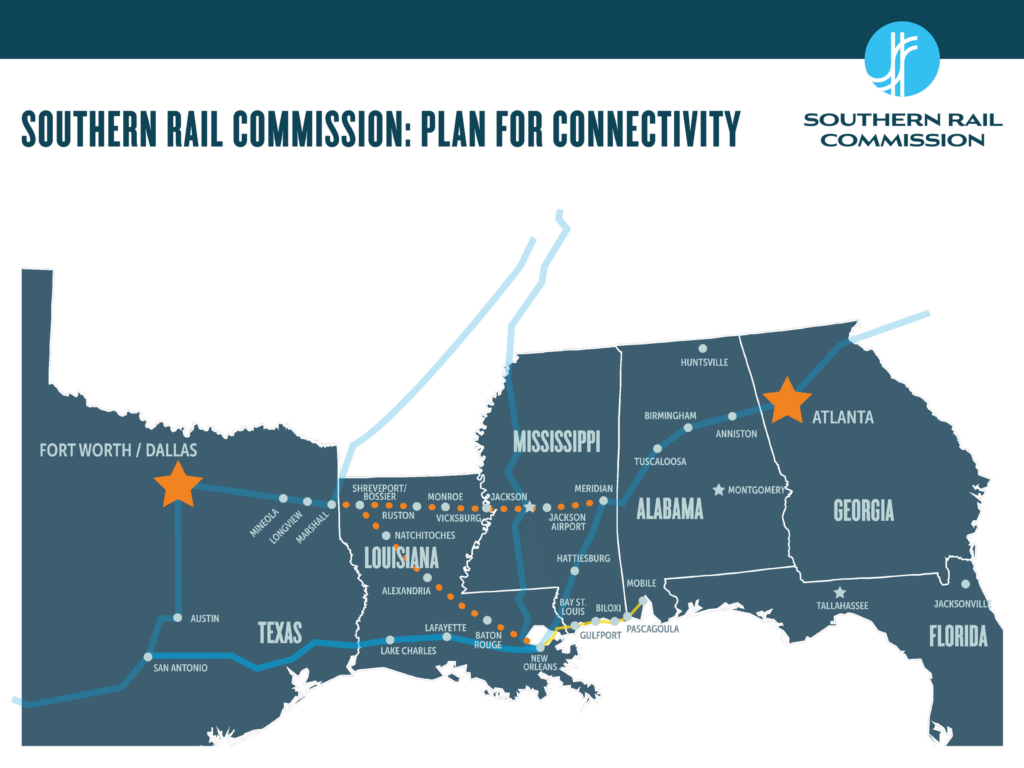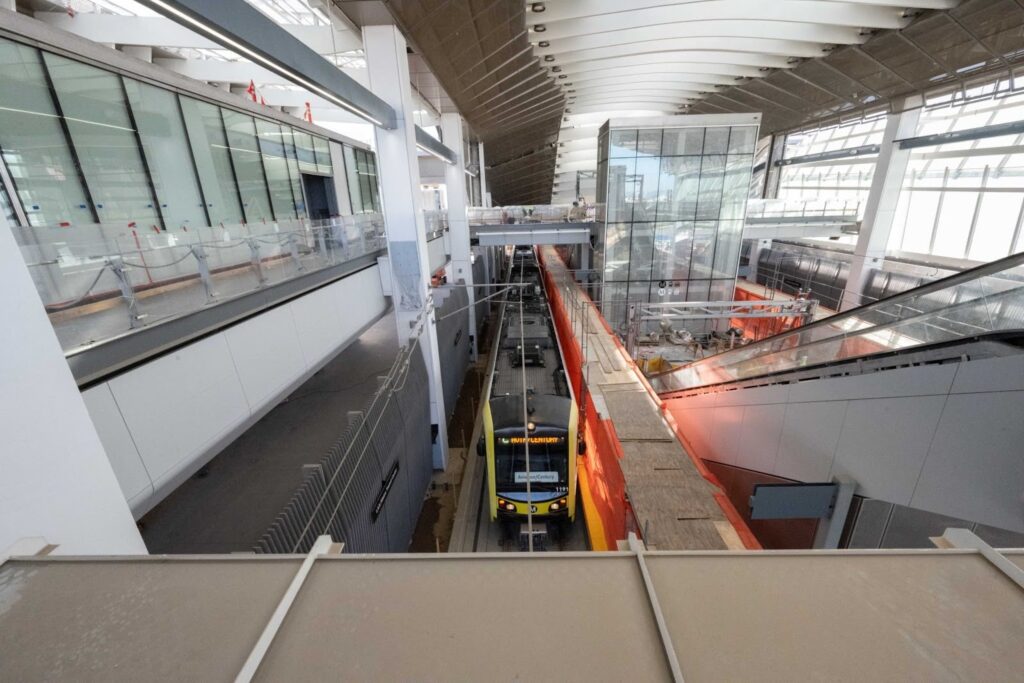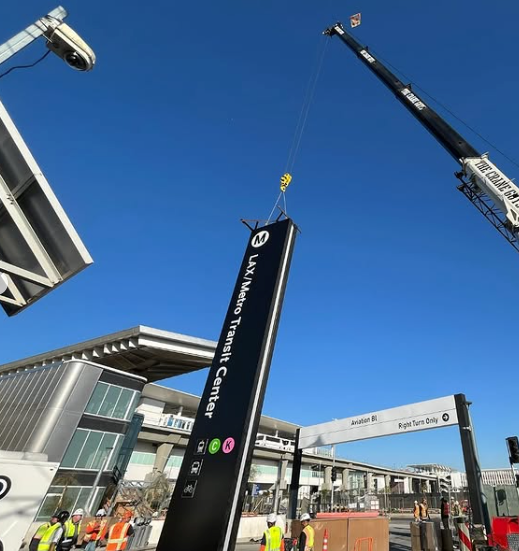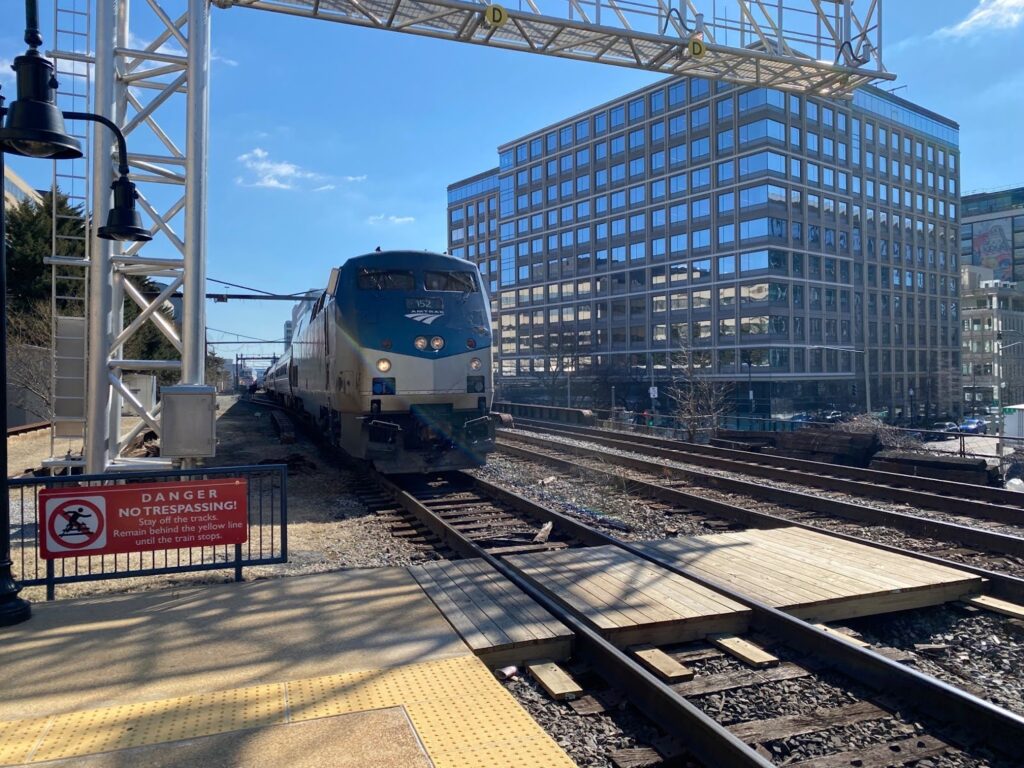
The Long-Distance Rail Study, released by the Federal Railroad Administration in the twilight hours of the Biden Administration on January 20, 2025, prioritizes lengthy projects that have little chance to succeed instead of shorter-term projects that can deliver service to Americans. It is imperative that Amtrak focus on routes that run daily and not only serve major employment centers but the small urban towns that lie between.
In January 2025, just before the change of Presidential Administration, the Federal Railroad Administration (FRA) released the Amtrak Long-Distance Service Study as a report to Congress. The study, which was due in November 2023, was mandated by Congress as part of the Infrastructure Investment and Jobs Act (IIJA), with the goal of evaluating the restoration of several long-distance passenger rail routes to be operated by the National Passenger Railroad Corporation (Amtrak).
The United States has lost many long-distance passenger rail routes in the decades following the founding of Amtrak in 1971. (Long-distance routes are routes that travel over 750 miles). The study found that many of the remaining 15 long-distance routes serve as a vital link for many rural communities that lack other transportation options, such as interstate highways or airports. Investing in more routes within the Amtrak network will offer increased access to communities across the country by a method other than driving or flying.
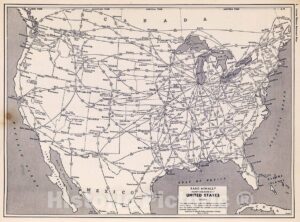
1940 map of passenger rail routes in the United States (Source)
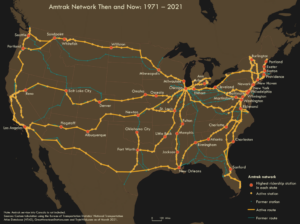
Comparison map of Amtrak routes in 1971 vs 2021 (Source)
While it is admirable to recommend 15 more long-distance routes (some of which are the restoration of previous services, while others are brand new service proposals), many of these projects are not able to be completed in a short period of time. Many of the recommendations require complex negotiations with the freight rail companies that own the tracks, constructing new or refurbished accessible stations and boarding platforms, and brand new corridor alignments in order to meet the needs of these proposed services. It is important to think in terms of four-, six-, and eight-year increments for project timelines, as that is the time frame in which Congress and the Presidency operate. And it is often extremely difficult to convince elected leaders to support a project that they may not even see while they are in office.
Quick win opportunities: The Cardinal and the Sunset Limited
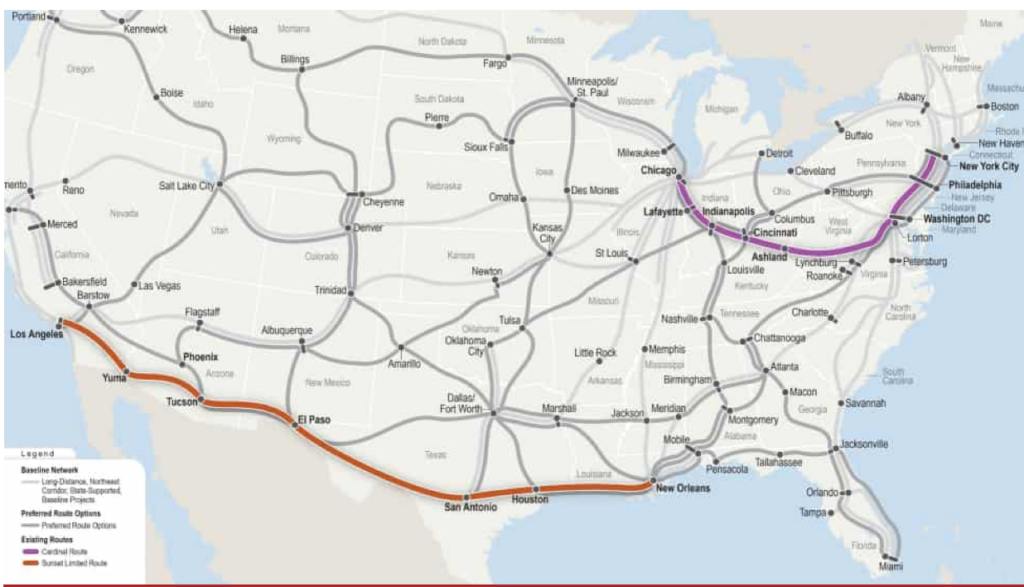
Figure 4-1 of the report
Of the 15 remaining long-distance routes, 13 have departures seven days a week. However, two of the proposed 15 trains have a lower frequency, only departing three times a week instead: the Cardinal and the Sunset Limited. Unlike many of the other new route proposals, upgrading the Cardinal and Sunset Limited to daily service is a feasible project that could be implemented in a shorter timeframe and deliver impactful results.
Houston, TX, the fourth most populous city in the United States and on the Sunset Limited route, is the largest city in the country without daily passenger rail service. The Cardinal exclusively connects Charleston, WV; Cincinnati, OH; and Indianapolis, IN, while the Sunset Limited exclusively connects Houston, TX; El Paso, TX; and Tucson, AZ. Cultivating daily service on these two routes would allow for reliable connectivity for many rural communities and small towns to economic and education opportunities and to health/social services.

North Coast Hiawatha Proposed Route (Source)
The North Coast Hiawatha, prominently listed as the “Seattle-Chicago” route, was a long-distance route that was discontinued in 1979. It was similar to the current Empire Builder route that travels between Chicago and Seattle or Portland (splitting service in Spokane), operating three times a week between Chicago and Seattle. However, unlike the Empire Builder, the North Coast Hiawatha took a more southern route through North Dakota and Montana, connecting cities such as Bismark, Billings, Bozeman, Helena, and Missoula. All of these cities currently lack passenger rail, which the Big Sky Passenger Rail Authority is advocating to change. Restoring the North Coast Hiawatha and upgrading it to daily service would allow for reliable connectivity and would increase access to everyday destinations.
Another branch of an existing service that was considered but not incorporated in the study was branching the Crescent, which runs from New York to New Orleans, at Meridian to have a branch to Fort Worth. This line has even received federal grants and currently has a supportive freight host (CPKC) for much of the route.
Tangible opportunities for tomorrow’s wins
With passenger rail funding at a crossroads in the United States, it is important that the FRA and Amtrak utilize existing rail assets in relation to population, economic, and health centers and prioritize starting passenger rail operations quickly. Projects such as the daily Cardinal and Sunset Limited, restoration and enhancement of the North Coast Hiawatha, and splitting the Crescent at Meridian to go to Dallas are shorter-term projects that would construct a brighter future for passenger rail. These projects would create new connections for riders, and allow greater mobility around the United States for a more reasonable cost and within a more reasonable timeframe.





